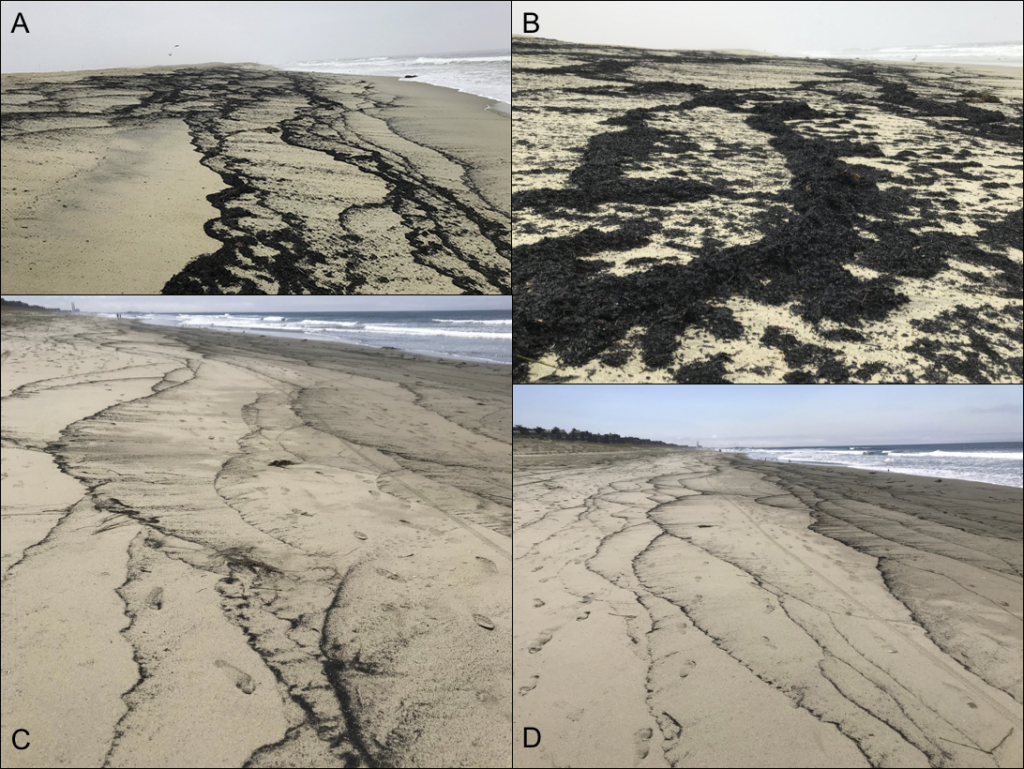On August 17, 2020 an early morning lightning storm ignited hundreds of fires throughout the state of California. In dramatic footage captured by satellite, 10,800 lightning strikes in California led to 367 fires. Along the coast of central California, 3 major fires began: the CZU lightning fire in San Mateo and Santa Cruz counties, the River fire in Salinas, the Carmel fire in Carmel Valley, and a fourth fire (Dolan) due to arson began in Big Sur on August 18th
Smoke clouded the skies and white ash coated the coastline. And now beachgoers have noticed that the ocean is depositing ash on the beaches of central California. More surprising is that even some large debris is washing ashore, either carried upwards by fire-generated updrafts to later settle in the ocean or carried to sea by local creeks and rivers.
Images from the Salinas River National Wildlife Refuge on 27 August 2020 show rows of ash and larger pieces of burnt wood. From a distance and from a surveillance plane, the dark material has a similar appearance to oil that washes ashore.

Interestingly, recreational divers in Monterey Bay have posted on SCUBA diving social media that the water in Monterey Bay tastes like charcoal, and some of this black soot has covered their equipment at the surface and as they exit the water.
Soot, ash, and charcoal can stain clothing and skin, so be careful when visiting the beaches. It remains to be seen what affect this material will have on the nearshore environment. And how long it will remain.
The Thomas Fire burned in Ventura and Santa Barbara Counties in December 2017. It burned approximately 281,893 acres (440 square miles) before being fully contained on January 12, 2018. It was, at that time, the largest wildfire in modern California history, but has since been surpassed. To learn more about how ash affected the marine environment offshore of Santa Barbara, view the poster below.